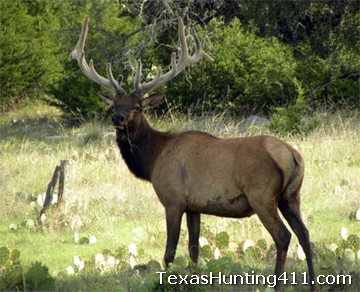Though there are some free ranging elk in Texas, thousands more are maintained behind high fences by breeders and private land owners. These captive herds are either purely recreational or part of a commercial deer and elk hunting operation. Elk had been treated as livestock, but new disease testing requirements are about to take effect. Elk producers wishing to sell or move elk must enroll in the Texas Animal Health Commission (TAHC) Chronic Wasting Disease (CWD) herd monitoring program or have elk tested.
After January 1, 2012, however, elk will only be allowed to move after all CWD surveillance requirements have been met. Surveillance requirements can be met by enrolling in the CWD status program, testing all mortalities and achieving “status,” OR by having a valid “not detected” CWD test on file prior to movement. The number of valid CWD tests required are based on the number of elk being moved and whether they are captive or free ranging.
The TAHC implemented new elk herd requirements on January 1, 2010, to ensure a stronger surveillance system for CWD in elk, which also can affect white-tailed deer. “The program is intended to help protect the exotic and native wildlife and the cervid industry of Texas from the possible introduction of CWD, by developing an effective surveillance system”, Dr. Dee Ellis, TAHC State Veterinarian, said.” “Enrollment and ultimately achieving status will allow producers to move elk without requiring additional mortality testing,” Dr. Ellis added. “I strongly encourage all elk producers to sign up today.”

CWD is a transmissible spongiform encephalopathy known to affect elk, moose, white-tailed deer, black-tailed deer and mule deer. It is a fatal, degenerative brain wasting deer disease. The typical clinical signs of CWD are emaciation, behavioral changes and excessive salivation. CWD is not known to affect people, and has not been detected in Texas to date. Since it was first detected in Colorado in 1967 however, it has subsequently been diagnosed in 17 other states and continues to threaten the cervid industry in other parts of the US.
The TAHC enforces interstate movement requirements for elk and other cervids entering Texas. Out of state animals must originate from a herd which has participated for at least five years in a state-approved CWD herd certification program, and with no clinical signs of CWD in the herd. In today’s environment, the mobility and transportation of agricultural animals throughout the state and country has greatly increased the potential exposure to diseases.
“Adequate and timely surveillance CWD testing is critical to detect a newly introduced or emerging disease as quickly as possible, so that it can be eliminated before potential spread to other animals”, explained Dr. Terry Hensley, Assistant State Veterinarian.
CWD has not been detected in captive or free-ranging deer or elk in Texas, but elk producers must continue to be mindful of the disease, and take necessary precautions to ensure the safety of exotic livestock. “Maintaining surveillance for CWD in elk in Texas is critical for effective animal disease response,” Dr. Hensley added.
By keeping appropriate records and sufficient sampling of animals as required by the program, a herd can achieve a recognized “herd status” for CWD. Under the TAHC’s elk enrollment program, elk would be test- eligible at 16 months of age or older, and tests conducted in a herd would be valid for one year.
In order to be eligible for moving elk, participation in the program is mandatory. The movement of elk around the state could impact non-complying breeders as well and elk hunting operations that depend on bringing animals in from time to time. Elk owners can enroll their herds in the CWD monitoring program today by contacting their local TAHC regional office.